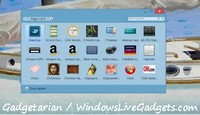Windows Recovery cannot recognize your system image backup?
In this post I will help you to get back your system, restoring it without the need of Windows Recovery, and then I will propose a way (that I follow myself) for better safety measures in the future, always using free applications.
Go to the folder where your system image is saved, locate the two vhdx files (the large one is for the main system disk, and the small one is for the System Reserved partition), right click on the large file (forget about System Reserved partition) and select the “Mount” option. If Windows gives an error and Windows Explorer won’t show your backup file as drive, do not panic. Go to “Disk Management” and most probably you will see there your mounted drive.
Download Macrium Reflect Free and create a full backup (image) of your mounted drive. Use the same application to create a Rescue Disk.
Now, boot from Macrium’s Rescue Disk and restore the image of your drive in the same drive where your current system is. Restart your machine. Most probably Windows won’t start, since it misses the System Reserved partition. Boot again with Macrium’s Rescue Disk, and it will make in seconds the restored system bootable. Restart and enjoy!
You must be now in the comfort of your desired Windows system. To avoid this trouble in the future, create always two backup images, one with the native Windows System Recovery applications, and another one with Macrium Reflect Free. Or just use Macrium and forget about native Windows Recovery. You should also always have available Macrium’s Rescue Disk.
Besides this, do not neglect regular backups of your personal documents. For this purpose a powerful, convenient and free application is SyncFolders.
Enjoy!
